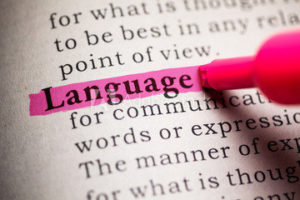
Can people disguise the way they write?
Can people deliberately fake their writing style?
By way of background…
Perhaps 25% of the cases I handle involve the authorship of anonymous, disputed, or forged documents. The client wants to know who’s writing those nasty, threatening emails or letters. I typically ask the client for writing samples from the suspected author. Sometimes there’s more than one suspect, and I have to decide which of them may be the author of the anonymous document(s).
I don’t use computers or statistics (what do they give you but numbers and probabilities, which still require interpretation?). I analyze the text in the traditional manner, which has been verified and validated by hundreds, if not thousands of academic studies — and legal cases, for two hundred years — and which involves the tools and techniques of the discipline known as “forensic stylistics.”
The idea is to look for and evaluate linguistic features at every level of language: spelling, punctuation, formatting (of names, dates, times of day), paragraphing, syntax, idiom, vocabulary, and much more.
A universe of decisions
The underlying premises are, first, that every literate person, regardless of competence (actually, incompetent writers make a lot of errors and are easy to profile) has a writing (and speaking) style, which consists of a universe of decisions made, unconsciously and on the fly (and often simultaneously), as the writer spins out the text; and second, that the writer is unaware that he/she is making all these decisions.
The result is a text with its own patterns of variation. As Gerald McMenamin writes in Forensic Linguistics: Advances in Forensic Stylistics (CRC Press, 2002),
“Unique markers [i.e., linguistic features as defined above – AMP] are extremely rare, so authorship identification requires the identification of an aggregate of markers, each of which may be found in other writers, but all of which would unlikely be present in any other writer” (p. 172).
Significant differences = same writer?
From time to time, when I identify what I believe to be significant differences, the client will insist that the same writer produced both documents but deliberately changed his/her style to throw me off.
Some accusations are absurd on the face of it, as with the gentleman who claimed that two letters had the same author, who had disguised his style in one of them. Never mind that the supposed author barely spoke or wrote English – or that the two letters contained numerous and striking differences, including referring to the same person from different points of view. How could someone fake that?
Which got me to thinking: could some anonymous writers also be forgers, pretending to be someone other than themselves? If there are such people, I call them Artful Dodgers: artful enough to dodge the linguist’s eye.
Disguising your writing
It all depends on the writer’s knowledge of language, just as my ability to hotwire a car depends on my knowledge of automotive mechanics.
Fortunately, few of us can hotwire a car – or disguise our style. To fake your writing style, you have to know what it is. That’s why I’ve never found an unambiguous, verifiable case of artful dodgery. I look at differences that are allegedly faked and think, “Nah, nobody knows enough about language to deliberately do that” (with the exception of writers, English teachers, linguists, and other members of the editorial class).
McMenamin’s book doesn’t mention the Artful Dodger, though the author does note that “it is well known in the field of questioned document examination that anonymous writers often use their own names to encourage investigators to see them as victims rather than possible perpetrators” (p. 174).
What would it take?
So…what would it take for someone to fake his/her writing style — to be a successful artful dodger? I mentioned the editorial class. These are the only people accustomed to talking about language objectively and therefore able to systematically manipulate and edit it.
As for everybody else…I can imagine an Artful Dodger wannabe tinkering with the font, the formatting of dates and times, the salutation and/or sign-off of a letter, maybe the capital letters. The Dodger might purposely misspell a word or two.
But that’s about it. From my experience with the conventions and the writers of English, the layperson who can systematically manipulate language is rare indeed.
Consider the hyphen
Consider the humble hyphen (we’ll confine our attention to its use in prefixes and compound words, though an interesting usage has emerged in the disambiguation of more +ADJECTIVE, e.g., more-interesting classes vs. more interesting classes).
To me, the hyphen is one of the most information-loaded indicators of an individual’s writing style. There is so much variation in its permissible use – just consider all the possibilities with words that begin with re- — that a tremendous amount of variation in individual usage is inevitable.
A writer may consistently, sometimes, or never hyphenate, with various prefixes and compounds (dog-house vs. dog house). The person may alternate hyphen, nospace, and space in a highly idiosyncratic manner, with particular prefixes and compounds. The possibilities are endless. I’ve even seen writers whose non-hyphenation is so consistent that it extends to words like co operation, where conventional usage would require nospace or hyphen.
This is the level of analysis that the Artful Dodger must command. To forge a style by altering the writer’s hyphenation practices – well, I would find that quite impressive. But it’s not likely.







